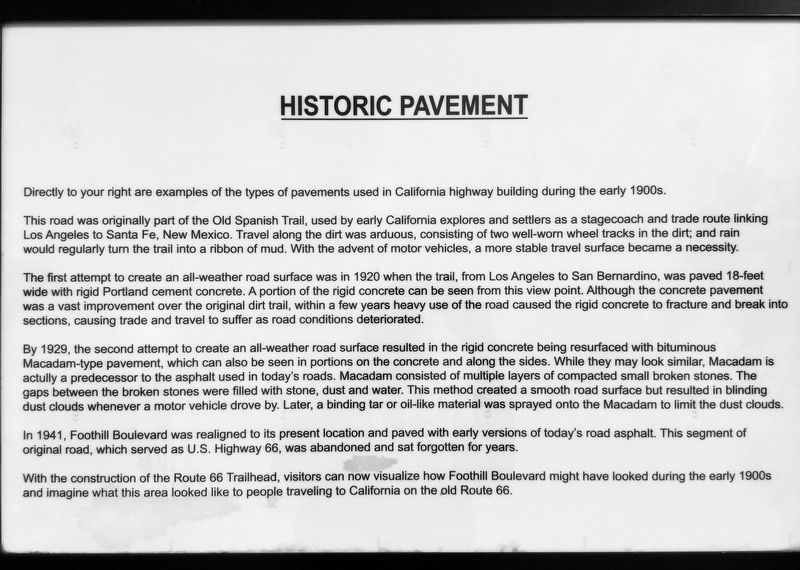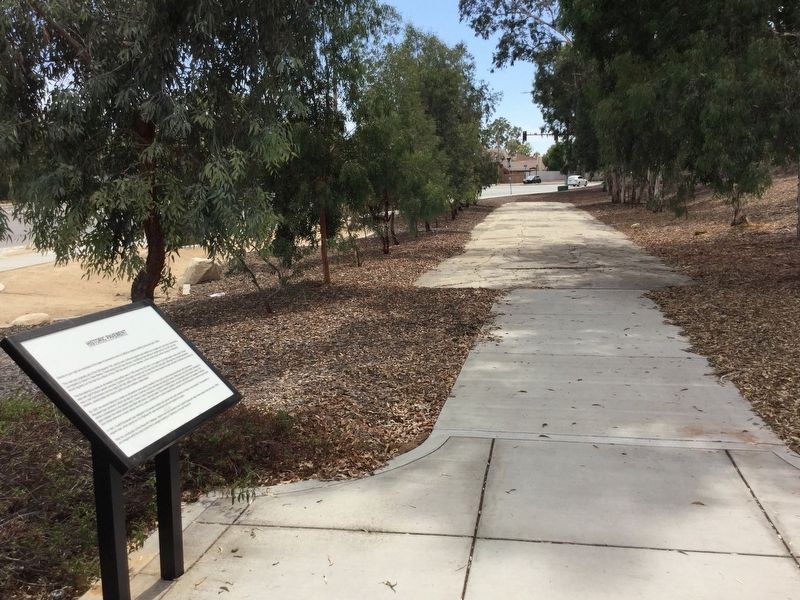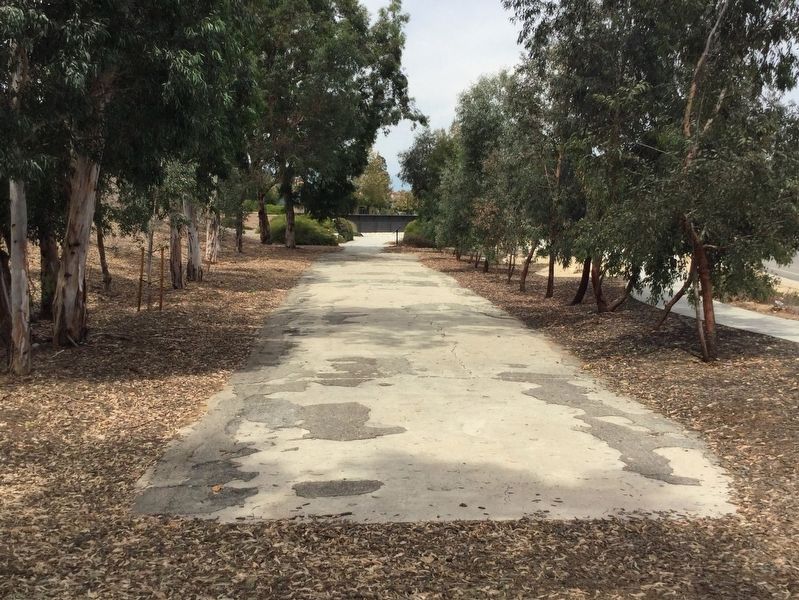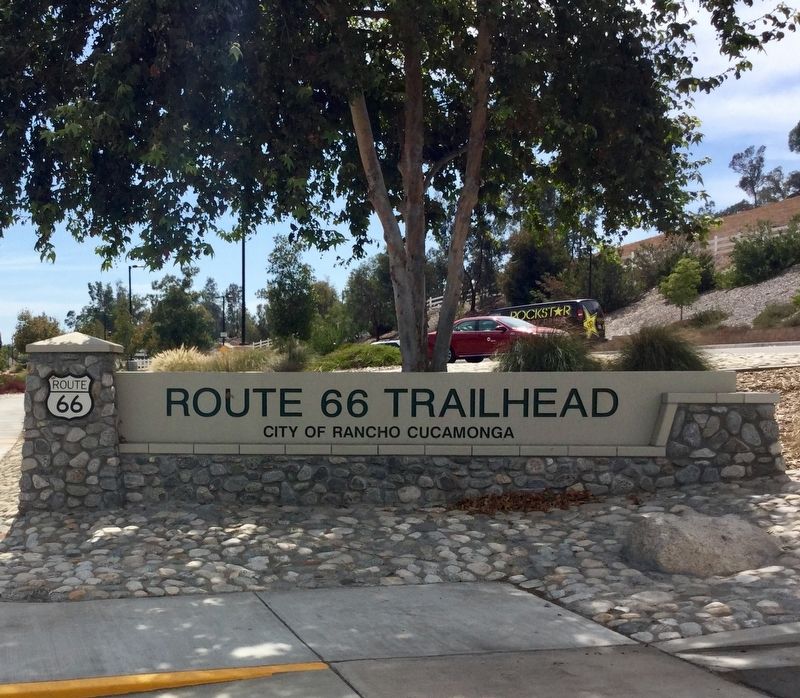Rancho Cucamonga in San Bernardino County, California — The American West (Pacific Coastal)
Historic Pavement
Route 66
This road was originally part of the Old Spanish Trail, used by early California explorers and settlers as a stagecoach and trade route linking Los Angeles to Santa Fe, New Mexico. Travel along the dirt was arduous, consisting of two well-worn wheel tracks in the dirt; and rain would regularly turn the trail into a ribbon of mud. With the advent of motor vehicles, a more stable travel surface became a necessity.
The first attempt to create an all-weather road surface was in 1920 when the trail, from Los Angeles to San Bernardino, was paved 18-feet wide with rigid Portland cement concrete. A portion of the rigid concrete can be seen from this view point. Although the concrete pavement was a vast improvement over the original dirt trail, within a few years heavy use of the road caused the rigid concrete to fracture and break into sections, causing trade and travel to suffer as road conditions deteriorated.
By 1929, the second attempt to create an all-weather road surface resulted in the rigid concrete being resurfaced with bituminous Macadam-type pavement, which can also be seen in portions on the concrete and along the sides. While they may look similar, Macadam is actually a predecessor to the asphalt used in today’s roads. Macadam consisted of multiple layers of compacted small broken stones. The gaps between the broken stones were filled with stone, dust and water. This method created a smooth road surface but resulted in blinding dust clouds whenever a motor vehicle drove by. Later, a binding tar or oil-like material was sprayed onto the Macadam to limit the dust clouds.
In 1941, Foothill Boulevard was realigned to its present location and paved with early versions of today’s road asphalt. This segment of original road, which served as U.S. Highway 66, was abandoned and sat forgotten for years.
With the construction of the Route 66 Trailhead, visitors can now visualize how Foothill Boulevard might have looked during the early 1900s and imagine what this area looked like to people traveling to California on the old Route 66.
Topics and series. This historical marker is listed in this topic list: Roads & Vehicles. In addition, it is included in the Old Spanish National Trail, and the U.S. Route 66 series lists.
Location. 34° 6.312′ N, 117° 37.132′ W. Marker is in Rancho Cucamonga, California, in San Bernardino County. Marker is on Foothill Boulevard east of Baker Avenue, on the left when traveling east. Touch for map. Marker is at or near this postal address: 8500 E Foothill Blvd, Rancho Cucamonga CA 91730, United States of America. Touch for directions.
Other nearby markers. At least 8 other markers are within walking distance of this marker. Pacific Electric Railroad (a few steps from this marker); 1977 (within shouting distance of this marker); 1887 (within shouting distance of this marker); 1881 (about 300 feet away, measured in a direct line); 1870s (about 400 feet away); 1880s (about 500 feet away); 1864 (about 500 feet away); 1858 (about 600 feet away). Touch for a list and map of all markers in Rancho Cucamonga.
More about this marker. Located in the Route 66 Trailhead park. Other displays describe the historic Pacific Electric Railroad, and the local citrus industry.
Credits. This page was last revised on February 12, 2022. It was originally submitted on July 23, 2018, by Craig Baker of Sylmar, California. This page has been viewed 652 times since then and 71 times this year. Photos: 1, 2, 3, 4. submitted on July 23, 2018, by Craig Baker of Sylmar, California. • Syd Whittle was the editor who published this page.



